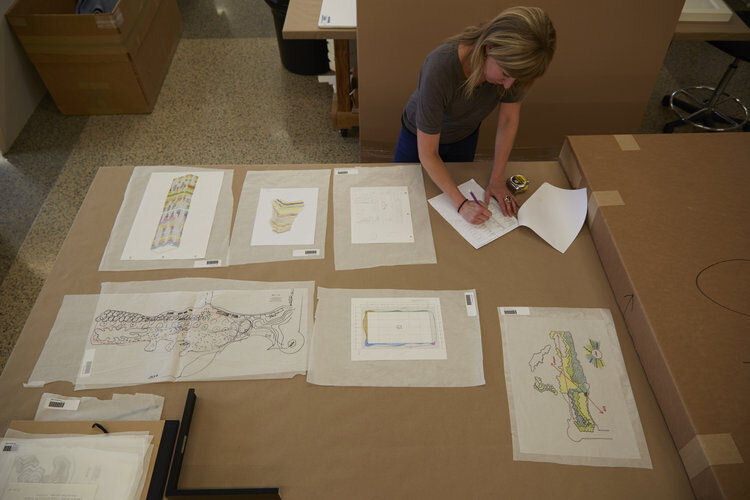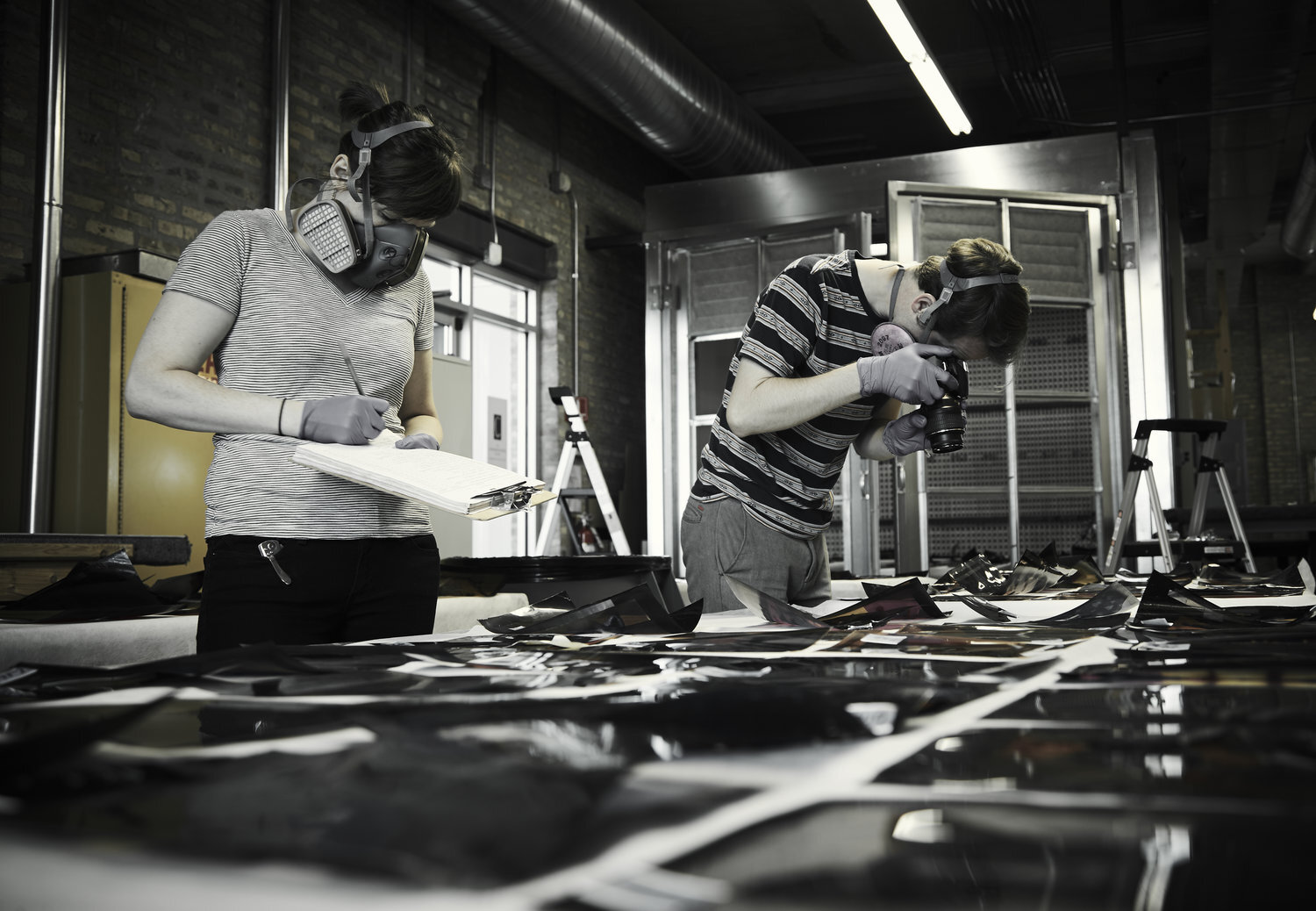Preventative assessment is crucial to properly maintain your collection. Condition reports and regular assessments provide a critical eye for potential damage that may go unseen in everyday life.
The Conservation Center is available to review your corporate, private, public, or non-profit art collection onsite and provide professional condition reports and conservation assessments. Your account manager is available to work with insurance companies, arrange annual assessments, prioritize conservation treatments that might be needed, and monitor any changes in the condition of your artworks and antiques over time.
Professional artwork condition reports by a trained conservator can be crucial to making sure your collection is properly insured.
An annual collection assessment is recommended to ensure the overall well-being of an art collection, in addition to understanding risk and considering strategies for preserving artworks and heirlooms for future generations. Please contact Client Services to schedule your artwork collection assessment.
The Conservation Center can work with you to:
Identify condition issues and treatment priorities for your artwork
Address archival housing and environmental concerns
Ascertain potential risks to your artwork and antiques
Advise on proper lighting techniques and climate controls for your art or heirloom collection
Provide long-term care recommendations
Arrange for long-term or temporary storage at The Conservation Center
Create a disaster response plan for your art collection
Please contact the Client Services Department to schedule an art collection assessment appointment.
stories related to art collection assessment:
the importance of conservation framing: the basics and benefits of archival housing
When owners and caretakers of artwork want to properly house their treasured works, their collection may pass through The Center’s Custom Framing Department. Works on canvas, metal, wood, plastic and everything in-between are treated at The Chicago Conservation Center. Each work is individually assessed in order to determine the most appropriate type of housing, based upon the medium, the stability of the piece, the style and the client’s display concerns. A wide variety of housing options are available: traditional framing, custom mounts, and vitrines are the most common. Housing style, however, is only part of a successful equation: a professionally trained and knowledgeable framer using the most effective conservation materials is essential to the longevity of a piece of art. How will the use of proper conservation materials protect your collection, and alternately, what are the dangers of improper housing? Presented here are some basics concerning custom conservation framing.





